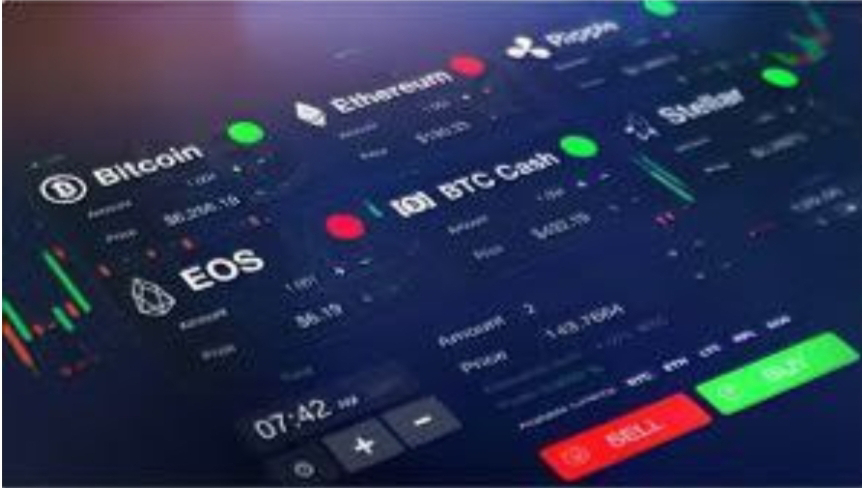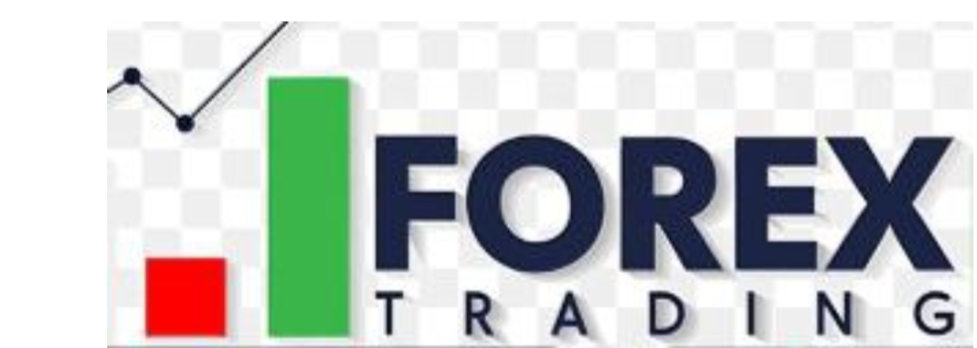What is Digital/Online Trading? Who Can Trade? Where & How?
In today's interconnected world, digital or online trading has revolutionized the way individuals participate in financial markets. Through internet-based platforms, traders can buy and sell a wide range of financial instruments, from stocks and currencies to commodities and cryptocurrencies, with just a few clicks. This form of trading offers unparalleled accessibility, allowing anyone with an internet connection and a funded brokerage account to engage in trading activities from the comfort of their own home or office. With various types of trading available online, including day trading, investors have the flexibility to choose strategies that align with their goals and preferences.
However, before diving into the world of online trading, individuals must undertake preparatory steps to ensure they are equipped with the necessary knowledge and tools to navigate the markets effectively. From educating themselves about trading concepts and strategies to selecting reputable brokerages and trading platforms, meticulous planning is essential. Additionally, traders must develop disciplined trading habits, manage risks effectively, and stay informed about market developments. By taking these steps, traders can embark on their online trading journey with confidence, aiming to achieve their financial objectives while navigating the dynamic landscape of financial markets.
What is Digital/Online Trading?
Digital or online trading refers to the process of buying and selling financial instruments or assets through electronic platforms accessible via the internet. This form of trading offers convenience, accessibility, and often lower costs compared to traditional methods of trading. Various types of trading can be conducted online, including:
1. Stock Trading: Online stock trading involves buying and selling shares of publicly traded companies through electronic platforms known as online brokerage accounts. Traders can execute trades, monitor their portfolios, and access market research and analysis tools online.
2. Forex (Foreign Exchange) Trading: Forex trading entails buying and selling currency pairs in the global foreign exchange market. Traders speculate on the exchange rate between two currencies, aiming to profit from fluctuations in their values. Online forex brokers provide trading platforms that allow traders to participate in the forex market 24/7.
3. Cryptocurrency Trading: Cryptocurrency trading involves buying and selling digital currencies such as Bitcoin, Ethereum, and others on cryptocurrency exchanges. Traders can engage in spot trading, where they buy and sell cryptocurrencies for immediate delivery, or derivatives trading, which includes trading futures, options, and other financial products based on cryptocurrency prices.
4. Commodity Trading: Online commodity trading enables investors to buy and sell physical commodities (e.g., gold, oil, agricultural products) or commodity futures contracts through electronic trading platforms. Commodity brokers offer online access to commodity markets, allowing traders to speculate on price movements and hedge against commodity price risks.
5. Options Trading: Options trading involves buying and selling options contracts, which grant the holder the right (but not the obligation) to buy or sell an underlying asset at a predetermined price within a specified time frame. Online options trading platforms facilitate the trading of options on various underlying assets, including stocks, indices, currencies, and commodities.
6. Futures Trading: Futures trading entails buying and selling futures contracts, which obligate the buyer to purchase or sell an underlying asset at a predetermined price on a specified future date. Online futures trading platforms offer access to futures markets across a wide range of asset classes, including commodities, stock indices, interest rates, and currencies.
7. Day Trading: Day trading refers to the practice of buying and selling financial instruments within the same trading day, with all positions typically being closed before the market closes. Day traders aim to profit from short-term price movements and often utilize leverage, technical analysis, and rapid trade execution strategies. Various types of assets, including stocks, forex, cryptocurrencies, and futures, can be traded through online platforms for day trading.
These are some of the common types of digital or online trading, including day trading, which have gained popularity due to their accessibility, efficiency, and flexibility afforded by online trading platforms. Traders should be aware of the risks associated with trading and carefully consider their investment objectives and risk tolerance before engaging in any form of online trading.
Who Can Trade Online?
Individuals: Any individual with access to an internet connection and a funded brokerage account can engage in online trading.
Retail Investors: Retail investors, including beginners and experienced traders, can participate in online trading to manage their investment portfolios and generate returns.
Institutions: Institutional investors, such as hedge funds, asset management firms, and banks, also engage in online trading to execute trades on behalf of their clients or proprietary trading desks.
Day Traders: Day traders, who aim to profit from short-term price movements, frequently engage in online trading using specialized day trading platforms.
Active Traders: Active traders, including swing traders and options traders, utilize online trading platforms to execute trades based on their trading strategies and market analysis.
Overall, digital or online trading has democratized access to financial markets, allowing a wide range of individuals and institutions to participate in trading activities and manage their investment portfolios efficiently. However, it's essential for traders to conduct thorough research, understand the risks involved, and develop sound trading strategies to navigate the dynamic nature of financial markets.
What is Day Trading?
Day trading is a trading strategy where traders buy and sell financial instruments within the same trading day, attempting to profit from short-term price movements. Here's a breakdown of the concept, what is traded, types, and strategies involved:
1. Concept:
- Day trading involves entering and exiting positions in financial markets (such as stocks, forex, commodities, or cryptocurrencies) within the same trading day.
- The goal is to capitalize on small price movements, aiming to make profits through frequent trades.
- Day traders typically rely on technical analysis, market indicators, and chart patterns to identify short-term trading opportunities.
2. What is Traded:
- Stocks: Day traders buy and sell shares of publicly traded companies on stock exchanges.
- Forex (Foreign Exchange): Day traders trade currency pairs in the forex market, taking advantage of fluctuations in exchange rates.
- Commodities: Day traders can trade commodities such as gold, oil, or agricultural products in commodity futures markets.
- Cryptocurrencies: Day traders buy and sell cryptocurrencies like Bitcoin, Ethereum, or Litecoin on cryptocurrency exchanges.
3. Types of Day Trading:
- Scalping: Scalpers make numerous trades throughout the day, aiming to profit from small price movements. Positions are typically held for just seconds to minutes.
- Momentum Trading: Momentum traders focus on stocks or assets that are exhibiting strong upward or downward momentum. They aim to capitalize on the continuation of existing trends.
- Range Trading: Range traders identify support and resistance levels in a security's price range and aim to profit from buying at support and selling at resistance.
- News-Based Trading: Traders react to news events or market developments that cause significant price movements, attempting to profit from the resulting volatility.
4. Strategies:
- Technical Analysis: Day traders use technical indicators, chart patterns, and price action analysis to identify entry and exit points for trades.
- Breakout Trading: Traders look for breakouts above resistance levels or below support levels, entering positions as price breaks out of a trading range.
- Reversal Trading: Traders identify potential reversal patterns, such as double tops or bottoms, and enter positions when they anticipate a change in trend direction.
- Pattern Trading: Traders look for specific chart patterns, such as triangles, flags, or head and shoulders patterns, which may indicate potential price movements.
- Risk Management: Successful day traders employ strict risk management techniques, such as setting stop-loss orders, using proper position sizing, and managing leverage, to protect their capital and minimize losses.
Day trading can be highly profitable for skilled traders who are able to effectively analyze markets, manage risk, and execute trades with discipline. However, it also carries significant risks, including the potential for substantial losses, especially for inexperienced traders who lack proper risk management strategies.
Preparatory Steps of Online Trading
Before getting into trading, especially day trading, it's crucial to take several preparatory steps to ensure you're adequately equipped to navigate the markets. Here's what you should consider:
1. Educate Yourself: Gain a solid understanding of trading concepts, market mechanics, and risk management principles. There are numerous resources available, including books, online courses, webinars, and educational articles. Make sure to learn about technical analysis, fundamental analysis, trading strategies, and the psychology of trading.
2. Set Realistic Goals: Define your trading goals and objectives. Determine how much capital you're willing to invest, your risk tolerance level, and your desired return on investment (ROI). It's essential to set realistic expectations and understand that trading involves risks, and losses are possible.
3. Practice with Simulated Trading: Consider using a simulated trading platform or a paper trading account to practice your trading strategies and gain experience without risking real money. This allows you to refine your skills, test different trading approaches, and develop confidence before trading with actual capital.
4. Choose a Suitable Trading Style: Assess various trading styles, such as day trading, swing trading, or long-term investing, and determine which approach aligns best with your personality, schedule, and financial goals. Day trading requires significant time commitment, as traders need to monitor the markets closely throughout the trading day.
5. Develop a Trading Plan: Create a detailed trading plan that outlines your trading strategy, including entry and exit criteria, risk management rules, position sizing guidelines, and performance evaluation metrics. Having a well-defined plan can help you stay disciplined and avoid impulsive decisions.
6. Select a Reliable Brokerage: Choose a reputable online brokerage that offers a user-friendly trading platform, competitive pricing, reliable execution, and access to a wide range of financial instruments. Ensure the brokerage is regulated by relevant authorities and provides robust security measures to protect your funds and personal information.
7. Research Trading Platforms: Evaluate different trading platforms that cater to day traders and offer features such as real-time market data, advanced charting tools, customizable trading interfaces, and fast order execution. Look for platforms with low trading fees, no hidden charges, and responsive customer support.
8. Consider Additional Tools: Explore additional trading tools and resources that can complement your trading activities, such as trading software, analytics platforms, trading journals, and community forums. These tools can provide valuable insights, market analysis, and support from fellow traders.
9. Stay Informed: Stay updated on market news, economic developments, and geopolitical events that may impact financial markets. Follow reputable financial news outlets, subscribe to market newsletters, and leverage social media platforms for market insights and updates.
Where to Trade?
As for where to trade, you can engage in day trading on various financial markets, including:
- Stock Markets: Trade stocks on major stock exchanges such as the New York Stock Exchange (NYSE) or NASDAQ.
- Forex Market: Trade currency pairs in the global foreign exchange market available various platforms, exness, pepperstone, trading view etc.
- Cryptocurrency Exchanges: Trade cryptocurrencies like Bitcoin, Ethereum, and others on both centeralize and decentrelized digital asset exchanges like, Binance, Coinbase, Trust Wallet, Metamask etc.
- Futures Exchanges: Trade futures contracts on commodities, stock indexes, or currencies on futures exchanges.
- Options Exchanges: Trade options contracts on stocks, commodities, or indexes on options exchanges.
Choose the market that aligns with your trading style, preferences, and expertise, and ensure you have access to a suitable trading platform and brokerage to execute your trades effectively. Always conduct thorough research and due diligence before engaging in trading activities, and be prepared to adapt and evolve your trading approach based on market conditions and feedback.
Conclusion
In conclusion, digital or online trading refers to the buying and selling of financial instruments through internet-based platforms. It offers accessibility, convenience, and lower costs compared to traditional trading methods. Various types of trading can be conducted online, including stock trading, forex trading, cryptocurrency trading, commodity trading, options trading, futures trading, and day trading. Before getting into trading, individuals should take several preparatory steps to ensure they are equipped to navigate the markets effectively. This includes educating oneself about trading concepts and strategies, setting realistic goals, practicing with simulated trading accounts, choosing a suitable trading style, developing a trading plan, selecting a reliable brokerage, researching trading platforms, considering additional tools, and staying informed about market developments. Day trading, in particular, involves buying and selling financial instruments within the same trading day to profit from short-term price movements. Day traders rely on technical analysis, market indicators, and chart patterns to identify trading opportunities. They can trade various assets, including stocks, forex, cryptocurrencies, and commodities, through online platforms. Ultimately, individuals of various backgrounds, including retail investors, institutions, day traders, and active traders, can engage in online trading. By conducting thorough research, practicing disciplined trading, and continuously learning and adapting to market conditions, traders can pursue their financial goals and potentially achieve success in the world of online trading.
Thank you!
























